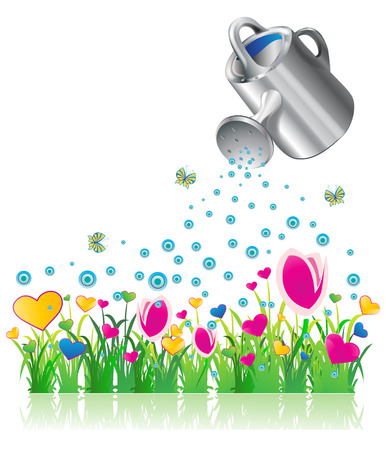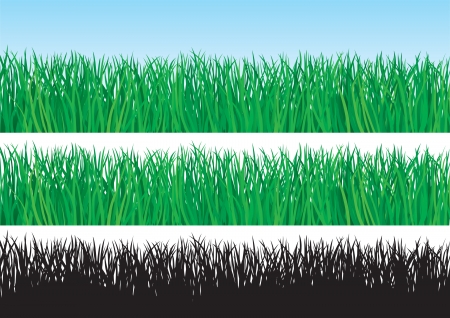Rethinking Traditional Lawns
Across the United States, the classic green lawn has long been a symbol of homeownership and curb appeal. But have you ever stopped to think about what it takes to keep that patch of grass looking lush? Let’s take a closer look at the environmental impact of traditional lawns and why so many Americans are considering alternatives.
The Environmental Cost of Lawns
While a green lawn might look nice, it comes with some serious downsides for our planet. Here are some key concerns:
| Issue | Details |
|---|---|
| Water Usage | Lawns are thirsty! According to the EPA, outdoor water use accounts for nearly 30% of household water usage in the U.S., most of which goes toward irrigating lawns. |
| Chemical Inputs | Pesticides, herbicides, and synthetic fertilizers are often used to keep lawns weed- and pest-free. These chemicals can run off into local waterways, harming fish and other wildlife. |
| Biodiversity Loss | Traditional grass lawns provide little habitat for pollinators, birds, or beneficial insects. They’re essentially “green deserts” that don’t support much life. |
Why Are Lawns So Common?
The love affair with lawns is partly cultural—many neighborhoods and HOAs even require them! But as droughts become more common and people learn about the hidden costs, there’s growing interest in smarter, greener options.
Key Takeaways:
- Lawns use lots of water—especially in dry regions like California or Arizona.
- Chemical treatments can pollute local soil and water.
- Grass-only yards don’t support bees, butterflies, or birds.
Understanding these impacts is the first step toward a yard that’s better for both your family and the environment.
Eco-Friendly Low-Water Ground Cover Options
If youre looking to replace your traditional lawn with something greener and more sustainable, low-water ground covers are a great place to start. These alternatives use less water, require minimal mowing, and can thrive in various American climates. Lets explore some popular choices that help conserve water while keeping your yard beautiful.
Clover: The Low-Maintenance Favorite
Clover is gaining popularity across the U.S. as a grass alternative. It stays green even during dry spells, needs little mowing, and naturally adds nitrogen to the soil, reducing the need for fertilizers. White clover and microclover are top picks for lawns because theyre soft underfoot and attract helpful pollinators like bees.
Creeping Thyme: Fragrant and Hardy
Creeping thyme is perfect for sunny spots where grass struggles to grow. This fragrant herb forms a dense mat, tolerates foot traffic, and bursts into tiny purple or pink flowers in summer. Its drought-tolerant once established and only needs occasional trimming to look tidy.
Native Grass Blends: Adapted to Local Conditions
Using native grasses is one of the best ways to create a resilient, eco-friendly yard. Native blends are tailored for different U.S. regions—like buffalo grass for the Midwest or fine fescues for the Northeast—and generally require far less water than traditional turfgrass. They also support local wildlife and pollinators.
Comparing Popular Low-Water Ground Covers
| Ground Cover | Water Needs | Main Benefits | Best For |
|---|---|---|---|
| Clover (White/Micro) | Low | Stays green, fixes nitrogen, soft texture | Lawns, play areas, pollinator gardens |
| Creeping Thyme | Very low (after established) | Fragrant, flowers attract pollinators, tolerates foot traffic | Sunny spots, borders, pathways |
| Native Grass Blend | Low to moderate (varies by species) | Drought-tolerant, supports local ecosystem | Large yards, naturalistic landscapes |
Tips for Getting Started with Ground Covers
- Choose varieties suited to your climate zone and sun exposure.
- Prepare the soil by removing weeds before planting.
- Water regularly until plants are established; after that, reduce watering gradually.
- Mow or trim occasionally if needed to keep things neat.

3. Creative Hardscaping for Curb Appeal and Function
When it comes to replacing thirsty lawns, hardscaping offers both practical and stylish solutions for American homeowners. By blending functional features with visual appeal, you can create an outdoor space that requires less water and maintenance but still looks fantastic. Here are some popular hardscaping options that fit perfectly into a sustainable landscape plan.
Gravel Patios: Simple, Affordable, and Stylish
Gravel patios are a favorite among homeowners looking for a budget-friendly and low-maintenance alternative to grass. Gravel allows rainwater to soak into the ground, reducing runoff and helping recharge local groundwater supplies. It’s also easy to install and can be customized with borders or stepping stones for added charm.
Benefits of Gravel Patios
| Benefit | Description |
|---|---|
| Water Conservation | No irrigation needed—gravel lets rain filter through naturally. |
| Low Maintenance | No mowing, fertilizing, or weeding required. |
| Budget-Friendly | Lower installation and upkeep costs compared to sod or turf. |
| Versatile Design | Easily pairs with pavers, plants, or garden furniture. |
Permeable Pavers: Eco-Friendly Walkways and Driveways
Permeable pavers are a smart choice for driveways, paths, and patios. Unlike traditional concrete or asphalt, these pavers have gaps filled with gravel or sand, allowing water to pass through instead of running off into storm drains. This reduces erosion and helps prevent flooding during heavy rains.
Popular Permeable Paver Styles
- Interlocking Concrete Pavers: Durable and available in various colors and shapes.
- Brick Pavers: Classic style that works well with historic homes.
- Turfstone Grids: Allow grass or low-water ground covers to grow between openings for a green look.
- Natural Stone: Adds rustic charm while remaining eco-friendly.
Inviting Pathways: Connect Spaces with Character
Pathways not only guide visitors through your yard but also break up large areas of hardscape or planting beds. Consider using materials like flagstone, decomposed granite, or wood chips for a natural look that blends seamlessly with your garden. Curved paths add visual interest and make even small yards feel larger.
Tips for Designing Functional Pathways
- Keep main walkways at least 3 feet wide for comfortable walking.
- Add solar-powered lights for safety and nighttime ambiance.
- Border pathways with drought-tolerant plants or mulch to soften edges.
- Avoid slippery surfaces; choose textured materials for better traction.
By mixing these hardscaping elements into your yard design, you can cut down on water use, reduce maintenance headaches, and boost your home’s curb appeal—all while making your outdoor living spaces more enjoyable year-round.
4. Designing and Maintaining Your Lawn Alternative
Planning Your Lawn Alternative
Before you start replacing your traditional lawn, it’s important to think about your space, climate, and how you use your yard. Do you need an area for kids or pets? Are you looking for a low-maintenance front yard? Start by observing sun patterns, drainage, and soil type. This will help you choose the best ground covers and hardscaping materials for your needs.
Popular Low-Water Ground Covers by Region
| Region | Ground Cover Options | Key Benefits |
|---|---|---|
| West (e.g., California, Arizona) | Dymondia, Creeping Thyme, Blue Fescue | Very drought-tolerant, minimal mowing |
| Southwest & Texas | Lippia, Buffalo Grass, Sedum | Handles heat, spreads quickly |
| Southeast (e.g., Florida) | Mondo Grass, Sunshine Mimosa, Asiatic Jasmine | Tolerates humidity and partial shade |
| Northeast & Midwest | Clover, Pennsylvania Sedge, Creeping Jenny | Cold-hardy, fixes nitrogen in soil |
| Pacific Northwest | Mosses, Kinnikinnick, Corsican Mint | Loves rain and shade, soft underfoot |
Installing Ground Covers and Hardscapes
Steps for Planting Ground Covers:
- Prepare the Soil: Remove grass and weeds. Loosen the top 2-3 inches of soil and mix in compost.
- Lay Out Plants: Space according to plant tag recommendations for quick coverage.
- Plant: Dig holes slightly larger than each root ball. Water well after planting.
- Add Mulch: Spread a thin layer of mulch between plants to keep moisture in and weeds out.
- Irrigate: Water regularly until established. Afterward, most ground covers need much less water than turf grass.
Hardscaping Tips:
- Pavers & Gravel: Use permeable pavers or decomposed granite to allow rainwater to soak into the ground.
- Create Paths: Lay stepping stones or flagstones through planted areas for easy access and visual interest.
- Add Mulched Beds: Use bark or wood chips around trees and shrubs instead of grass for a natural look.
- Sit Spots: Add benches or small patios using recycled concrete or stone for eco-friendly outdoor living spaces.
Caring for Your Lawn Alternative Year-Round
Irrigation Needs Table by Ground Cover Type:
| Ground Cover Type | Irrigation Frequency (after establishment) |
|---|---|
| Drought-Tolerant (e.g., Dymondia) | Once every 2-3 weeks during dry spells |
| Clover & Sedges | Once a week if no rainfall |
| Mosses & Shade-Lovers | Mist as needed during dry periods |
- Mowing/Trimming: Most ground covers need only occasional trimming to keep them neat. Some never need mowing at all!
- Pest Management: Healthy ground covers rarely have pest problems. Hand-pull weeds while plants are young. Avoid chemical pesticides when possible.
- Aeration & Mulching: Refresh mulch yearly and aerate compacted soil around hardscape edges to promote drainage.
If you design with your local conditions in mind and choose the right mix of plants and materials, your lawn alternative will save water, reduce maintenance time, and support local wildlife—all while looking great throughout the seasons!
5. Inspiring Success Stories and Resources
Real-Life Examples from American Homeowners
Switching from traditional grass lawns to low-water ground covers or hardscaping is becoming more popular across the United States. Here are some real stories from homeowners who have made the leap and are loving the results:
| Location | Lawn Alternative | Main Benefit | Homeowners Quote |
|---|---|---|---|
| Denver, Colorado | Creeping Thyme & Flagstone Patio | No mowing; attracts pollinators | “We cut our water bill in half and now spend weekends enjoying the patio instead of mowing.” |
| Phoenix, Arizona | Decomposed Granite & Native Cacti | Drought-resistant; modern look | “Our front yard went from thirsty turf to a desert oasis—no regrets!” |
| Portland, Oregon | Moss Lawn & Stepping Stones | Green year-round; soft underfoot | “Moss loves the rain here, and it means less work for us.” |
| Austin, Texas | Bermuda Grass Replaced with Clover Mix | Stays green with little water; bee-friendly | “Our kids love playing on the clover, and we hardly ever water anymore.” |
Helpful Resources for Making the Switch
If youre inspired to transform your own yard, here are some trustworthy resources to get you started:
Online Guides & Organizations
- EPA WaterSense Landscaping Tips: Official advice on drought-tolerant landscaping.
- Xerces Society Plant Lists for Pollinators: Great for choosing native ground covers.
- National Wildlife Federation Garden for Wildlife™ Program: How to make your yard wildlife-friendly.
- Houzz Lawn Alternatives Gallery: Browse photos of real projects for inspiration.
Where to Buy Ground Covers and Hardscape Materials
| Resource Type | Name/Link |
|---|---|
| Native Plants & Ground Covers Nurseries | PlantNative.org Directory |
| Hardscape Materials Suppliers (nationwide) | SiteOne Landscape Supply |
| Local Cooperative Extensions (advice & classes) | USDA Extension Programs Locator |
| Find Landscape Pros Near You | Angi (formerly Angies List) |
Pro Tip: Start Small!
You don’t have to replace your entire lawn at once. Many homeowners begin by transforming just a section or a front walkway area. This way, you can test what works best in your climate and enjoy quick wins as you go!


